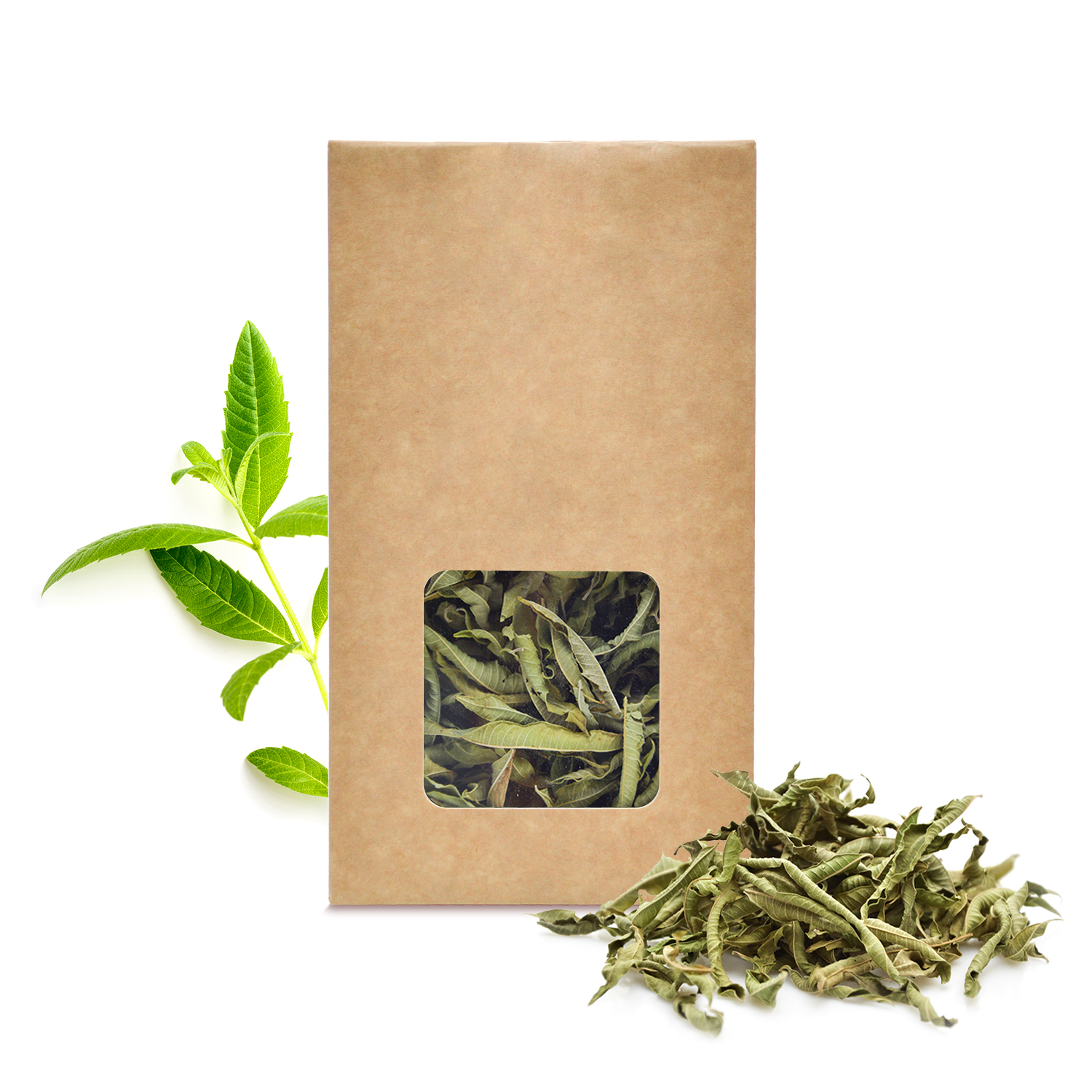
Scented Verbena is mainly known for acting against sleep disorders, difficulty falling asleep, and states of stress and anxiety. Less known, its leaves are also digestive and stomachic: they are useful in cases of difficult digestion, bloating and flatulence. Latin name: Aloysia citriodora Palau. Part of the plant: leaves.
This article was updated on 08/02/2023In case of Sleep problems, Insomnia
Drink 30 minutes before bedtime.
Recommended modes of use
In infusion
Pour 3 to 5 dry leaves per cup of hot water. Leave to infuse for 10 minutes. Drink 1 to 3 cups per day.
Plants often associated
In case of Nervousness, palpitations, anxiety, stress
Recommended modes of use
In infusion
Pour 3 to 5 dry leaves per cup of hot water. Leave to infuse for 10 minutes. Drink 1 to 3 cups per day.
In an aromatic bath
Pour 1 handful of dry leaves into a cloth bag or fine cloth. Hang the sachet under the hot water tap. The infusion will be made during the bath. If necessary, squeeze the sachet to facilitate the extraction of the active ingredients from the leaves.
Plants often associated
In case of Bloating, Flatulence
Recommended modes of use
In infusion
Pour 3 to 5 dry leaves per cup of hot water. Leave to infuse for 10 minutes. Drink 1 to 3 cups per day.
Plants often associated
In case of Dyspepsia, Difficult digestion, Digestive disorders
Recommended modes of use
In infusion
Pour 3 to 5 dry leaves per cup of hot water. Leave to infuse for 10 minutes. Drink 1 to 3 cups per day.
Plants often associated
Properties and active components
Properties
- sedative (flavonoids)
- antispasmodic (citral)
- stomachic
- digestive
Active components
- Essential oils: citral, geranial, neral, cineol, limonene, etc.
- Polyphenols: verbascoside, etc.
- Flavonoids: salvigenin, eupafolin, hispidulin, artemitin, hesperidin, vitexin, etc.
- Iridoids: verbenaline
- Tannins
- Mucilages
Precautions for use
No special precautions for use for this plant.
Botanical
Verbena belongs to the family of Verbenaceae. Small shrub with woody and branched stems, it reaches 2 m high. The stems bear lanceolate and whorled leaves in groups of 3 or sometimes 4.
Colored pale green, THE leaves reveal a marked vein and oil glands on their underside. Rough to the touch, they emit a sweet lemony scent when crushed. THE small whitish flowers à pale purple, are grouped into terminal ears about tens of cm long and arranged in starry corollas with 5 lobes. They produce small fleshy fruits containing a stone. The leaves are harvested at the end of the summer season between mid-July and mid-October after flowering.
Originally from the countries of the Andes, the ideal climate for Scented Verbena mediterranean. It is found on sunny soils, generally at high altitude. It is mainly cultivated in countries of the Mediterranean basin and in South America.
Was this article helpful to you?
Average grade: 4.5 ( 28 votes)
Bibliography
Publication: Ragone, MI, Sella, M., Pastore, A., & Consolini, AE (2010). Sedative and cardiovascular effects of Aloysia citriodora Palau, on mice and rats. Latin American Journal of Pharmacy, 29(1), 79-86. http://www.latamjpharm.org/trabajos/29/1/LAJOP_29_1_1_11_A6K2OA3P16.pdf
Publication: Ragone, MI, Sella, M., Conforti, P., Volonté, MG, & Consolini, AE (2007). The spasmolytic effect of Aloysia citriodora, Palau (South American cedar) is partially due to its vitexin but not isovitexin on rat duodenums. Journal of Ethnopharmacology, 113(2), 258-266. https://doi.org/10.1016/j.jep.2007.06.003
Publication: Bahramsoltani, R., Rostamiasrabadi, P., Shahpiri, Z., Marques, AM, Rahimi, R., & Farzaei, MH (2018). Aloysia citrodora Paláu (Lemon verbena): A review of phytochemistry and pharmacology. Journal of Ethnopharmacology, 222, 34-51. https://doi.org/10.1016/j.jep.2018.04.021
Publication: Hurrell, J. A. (2018). Aloysia citriodora Palau. Medicinal and Aromatic Plants of the World, 97-108. https://doi.org/10.1007/978-94-024-1552-0_7
Work : Dubray, M. (2010). Guide to contraindications of the main medicinal plants. La Geneytouse, France: L. Souny.
Work : Pierre, M. (2017). The bible of healing plants. Vanves, France: Editions du Chêne.
Work : Lousse, D., Macé, N., Saint-Béat, C., & Tardif, A. (2017). The family guide to medicinal plants. Paris, France: Mango.
Work : Bernard, C. (2015). Medicinal wines and elixirs. The Long Live Source.
Work : Fleurentin, J., Pelt, JM, & Hayon, JC (2016). Good use of healing plants. Rennes, France: Ouest-France.
Work : Valnet, J. (1986b). Phytotherapy: treating yourself with plants. Paris, France: Maloine SA
Work : Fournier, PV, & Boisvert, C. (2010). Dictionary of medicinal and poisonous plants of France. Paris, France: Presses de la Cité.
Website : Lemon verbena. (nd). Gerbeaud. https://www.gerbeaud.com/jardin/fiches/verveine-citronnelle.php
Website : Irrigated aromatic plants: verbena in a diversified market gardening system. (2014, January). south-and-organic. https://www.sud-et-bio.com/sites/default/files/Fiche_Cultures_Verveine_Partie%201_2014.pdf


